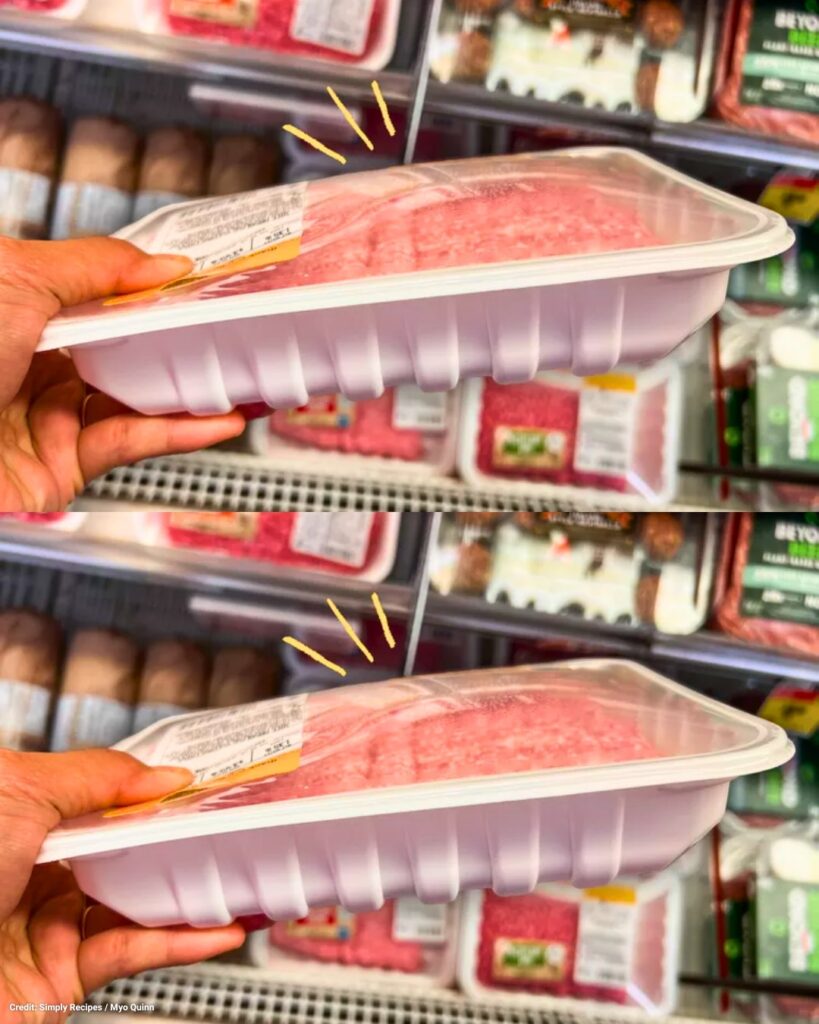Ever grabbed a pack of meat, dairy, or a ready-made meal that looked like it had ballooned up? It’s a common sight, and it naturally raises the question: Is this still safe to eat? While a small cushion of air inside packaging can be completely normal, excessive puffiness can point to a much bigger problem. Knowing the difference is key to avoiding foodborne illness.
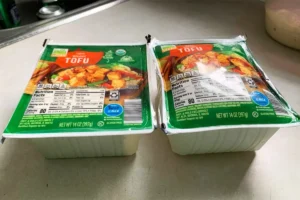
Normal Puffiness vs. Dangerous Swelling
Not all air inside food packaging is bad. In fact, it’s often intentional:
- Snack Foods (Chips, Crackers, etc.): Those “half-empty” chip bags aren’t a trick—they’re actually filled with nitrogen gas. This prevents the snacks from going stale and keeps them from crumbling during transport.
- Fresh Meats, Salads, or Produce: Many fresh foods are packed with a technique called Modified Atmosphere Packaging (MAP). In this process, oxygen is replaced with safe gases like nitrogen or carbon dioxide to extend freshness and slow spoilage.
Professor Wei Zhang, a food safety specialist, notes that this kind of controlled packaging inflation is perfectly safe and carefully regulated. However, when a package looks like it’s about to burst, it’s usually a clear signal that harmful changes are happening inside.
The Bacterial Culprit Behind Bloated Packaging
When perishable foods begin to spoil, microorganisms such as bacteria and yeast grow rapidly. As they multiply, they release gases—mainly carbon dioxide—that get trapped inside sealed packaging, causing it to bulge or swell.
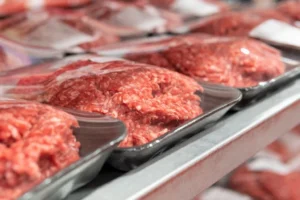
According to Meredith Carothers from the USDA’s Food Safety and Inspection Service, this kind of bloating is often direct evidence of bacterial activity and should never be ignored.
This swelling is particularly common with foods high in moisture, such as:
- Raw meat and poultry
- Seafood like fish or shrimp
- Dairy products including milk, yogurt, and cheese
Unfortunately, these conditions can encourage dangerous bacteria like E. coli, Listeria, or Salmonella—even if the printed expiration date hasn’t passed.
Foods Most Likely to Be Affected
- High-Risk Foods: Fresh produce, refrigerated meats, seafood, dairy products, and ready-to-eat prepared meals. Even cooked or processed foods can become risky if left at unsafe temperatures.
- Lower-Risk Foods: Dry goods such as pasta, rice, nuts, dried fruits, and peanut butter. Since bacteria need water to thrive, these items are less prone to swelling and spoilage.
- It’s also important to remember: trusting your nose alone isn’t reliable. Some harmful bacteria don’t produce strong odors, meaning spoiled food can look and smell normal while still being unsafe.
How to Stay Safe
A few practical steps can protect you and your family:
- Inspect Packaging Before You Buy
- Don’t purchase any product with swelling, leaks, or broken seals—even if it hasn’t expired.
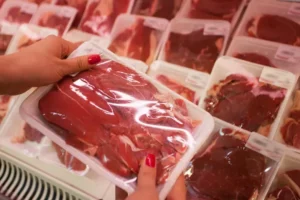
Store Foods Correctly
Refrigerate perishable items quickly after shopping. Avoid leaving them in a hot car or direct sunlight, since heat speeds up bacterial growth.
Never Taste Suspect Foods
A “test bite” isn’t worth the risk. Even a small amount can expose you to serious bacteria.
Watch for Other Clues
Signs like foul odors, broken seals, or leaking liquid can all indicate contamination.
As Professor Zhang stresses: “When you’re unsure, it’s safest to throw it out.”
Why It Matters
Foodborne illness is far more common than most people think. According to the CDC, millions of Americans suffer from contaminated food every year. While some cases cause mild discomfort, others can lead to hospitalization—or prove life-threatening for children, the elderly, or anyone with a weakened immune system.
By recognizing swollen packaging as a warning sign and practicing proper food storage, you greatly reduce the chances of foodborne illness at home.
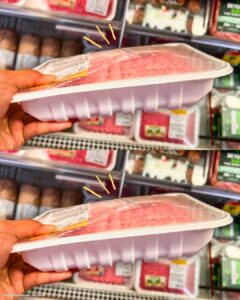
The Bottom Line
A little air inside certain packaging—like chips or pre-washed salads—is completely normal and part of the preservation process. But when a container looks like it’s ballooning—especially if it holds meat, dairy, seafood, or prepared meals—it’s usually a sign of bacterial gas buildup.
That means the food could be contaminated, even if it looks or smells fine. The safest choice is always to discard it.
Following the golden rule—“When in doubt, throw it out”—is one of the simplest and most effective ways to protect your family’s health.


